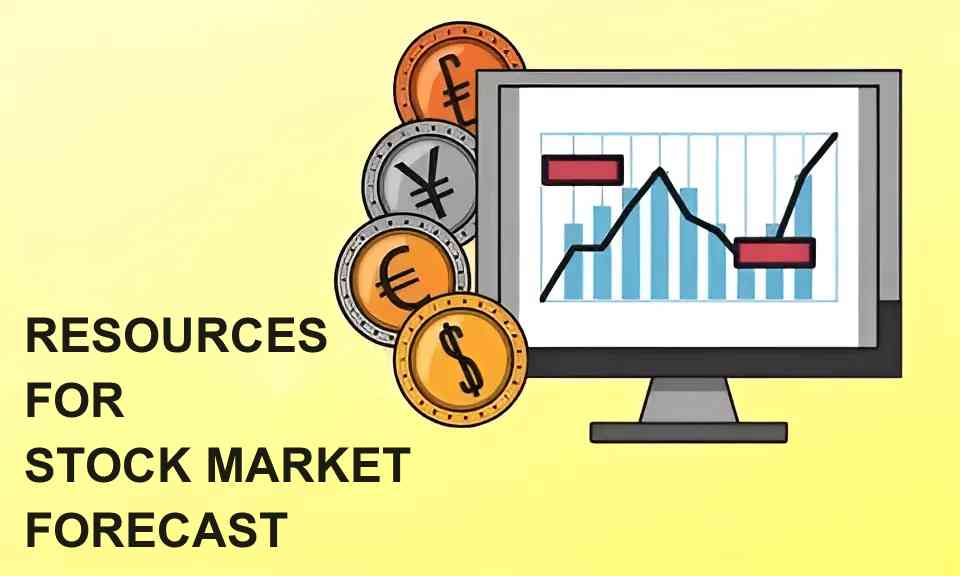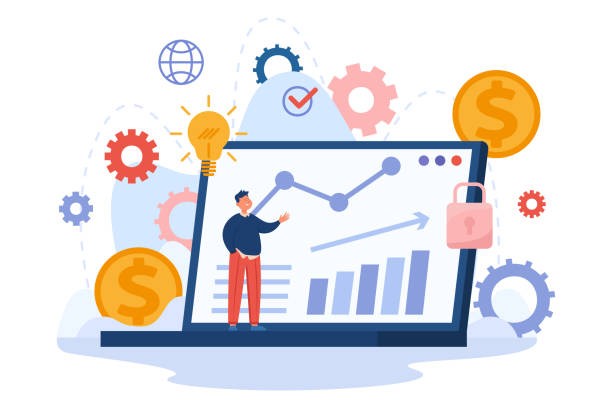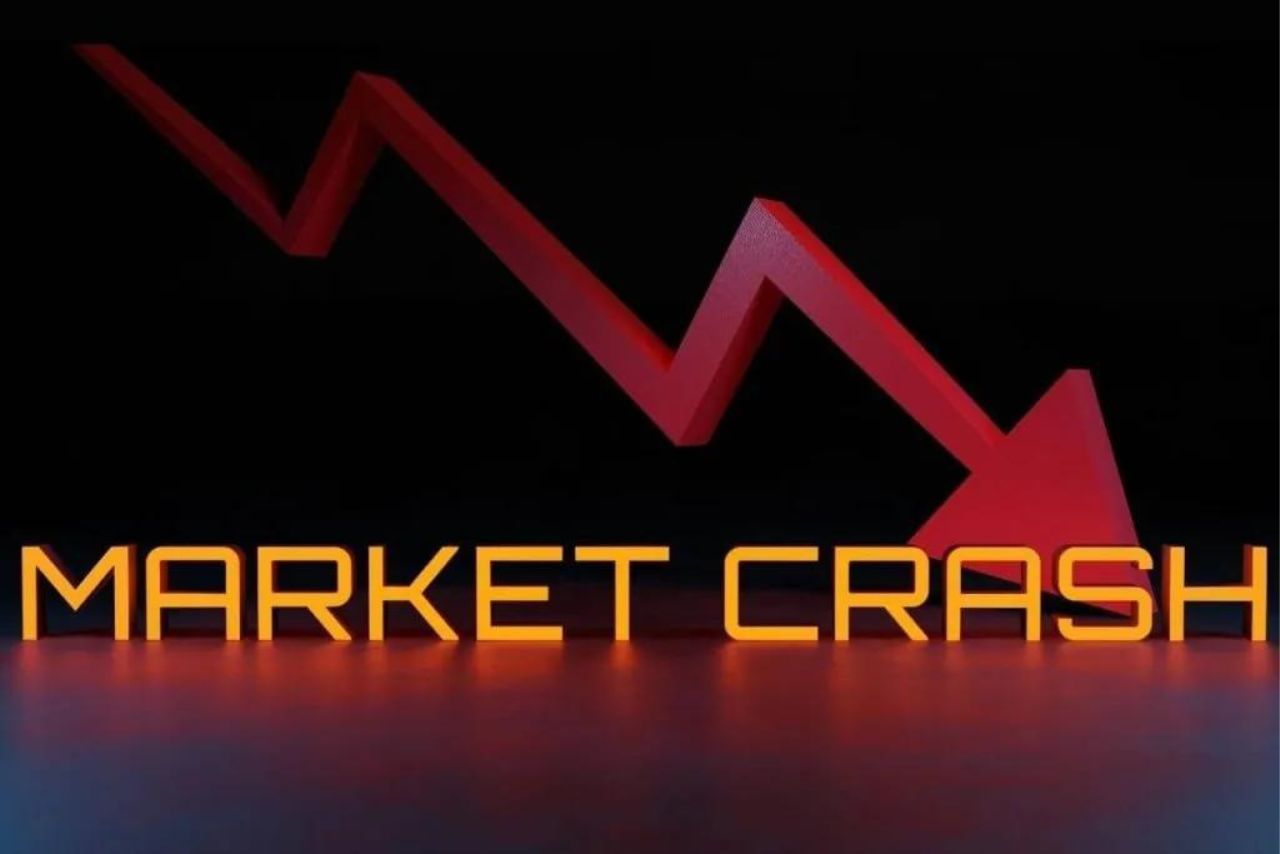Diving into the stock market’s future can seem like a mystery, but it doesn’t have to be. With the right resources for stock market forecast, you can start to unravel the threads of what tomorrow may hold for your investments. I’m here to walk you through the must-have tools that can help sharpen those predictions. From crunching numbers with the latest algorithms to drawing insights from past market behavior, this guide is your map to understanding where the market is heading. We’ll explore how to boost your trading plans with economic indicators and sail past the rough seas of uncertainty. Get ready to equip yourself with strategies and analytics that could make a real difference in your market forecasts. Let’s decode the stock market’s future together.
Harnessing the Power of Quantitative Trading Algorithms
Developing Strategies using Historical Data
When I use past stock data, I craft winning plans. Think of it like sports. A coach watches past games to prepare. In stocks, we look back to forecast the future. By examining historical trends, we can guess where a stock might go. This is the core of stock trend analysis. We analyze patterns that stocks followed before. It helps us find hints of what could happen next.
Now, using past data isn’t foolproof. But it’s a robust part of our toolkit for stock predictions. We merge this with other tools for the best guess. These tools are things like stock valuation tools. They help us figure out if a stock’s price makes sense. We also use trading signal services. They send us tips when it’s a good time to buy or sell. These signals often come from very smart computer programs. We call these quantitative trading algorithms. They do the hard math for you. They crunch numbers fast to find good trades.
Incorporating Economic Indicators for Market Projection
Next up, let’s talk about economic indicators. These are like a health check for the economy. Just like how you look lively when you’re healthy. These indicators help show when markets may go up or down. There are many types, some easy, some complex. Easy ones include jobs data. More jobs usually mean a happier market. Then we have interest rates. If they go up, borrowing costs more. This can slow spending and affect stock prices.
Some indicators need more thought. Like GDP, this tells us how much stuff a country makes. It shows if an economy is growing or not. Another is inflation data. If prices rise, people might buy less. All of this can predict where stocks are heading. It’s like piecing together a puzzle. Each piece helps us see the bigger picture better.
Using these clues, we form a picture of what’s likely to happen. This doesn’t just help with picking stocks. It’s also useful for assets like bonds or real estate. When combined, historical data and economic indicators offer a powerhouse duo for creating financial models for investment predictions. Ever watched those amazing weather forecasts? They predict storms or sunshine. In the stock market, we do that for prices. Using signals from the economy is like checking the financial weather.
We use all this info to make our investing decisions smarter. We try to jump on good stocks before they take off. Or dodge the bad ones before they drop. And the best part? We’ve got software to help us. Investing forecast software takes all this data and spits out advice. Just like a GPS for your car, these tools give you directions. They show you the best way to your investment goals. But remember, the market is tricky. No software can see the future for sure. It’s always a smart move to mix these amazing tools with your own research.
There, you now have a peek into the toolkit of a market forecaster. With solid data and smart tech, we do more than guess; we make informed bets on tomorrow’s market moves. And that, my friends, could make all the difference in your investing journey.
Advanced Analytics in Stock Market Predictions
Leveraging Machine Learning for Enhanced Accuracy
Machine learning is a game-changer in stock predictions. It spots trends that are hard to see. This tech learns from vast data, just like a pro investor does. But faster and with less bias. Machine learning in stock prediction? Think of it as your tireless, smart companion in the tricky investing world. You can trust it to sift through heaps of info, picking up delicate market signals way before humans.
Imagine feeding past stock moves to these algorithms. They chew on this data, learning patterns that point to future prices. These patterns are gold. They’re clues to what might happen next in the market. We’re talking about turning history into foresight. Stock trend analysis leaps forward with such tools. Conventional wisdom meets digital brilliance, all to crack the stock code.
Deploying Big Data Analytics in Trading Decisions
Big data analytics? It’s a powerhouse for traders. You see, the market throws tons of info at us. Prices, news, tweets, reports, you name it. It feels like a flood. Big data analytics in trading makes sense of this flood. It’s like a dam, channeling the flow into meaningful streams. Streams that guide your trades.
Take financial modeling for investment predictions. The old way was good. But mix in big data, and it’s like you’ve got trading superpowers. Now add economic indicators for market projection. Suddenly, you’re not just guessing; you’re informed. Informed by numbers, patterns, facts. Facts that create a clearer picture of where the market’s heading. This is smart, strategic investing made possible by cutting-edge tools.
By fusing big data with market sentiment analysis, traders can spot the mood of the market. Happy, sad, scared—markets have moods, and moods move money. That’s why we also deploy trading signal services. Signals are like secret notes, telling us when to make a move. And when it comes to investment analytics platforms, they are the eyes that never sleep, always watching the markets for us.
Algorithmic trading software takes this all in stride. Fast, precise, emotionless. It’s how smart beta strategies are played nowadays. Bet on it once you’ve used equity research reports to choose your champions.
Let’s not forget, AI is not just fancy; it’s functional. Stock forecasting AI is on the rise for good reason. Smart. Fast. Predictive. It takes what it knows, and turns it into a forecast. Like a weather alert, but for stocks. And who wouldn’t want a heads-up when rain—or cash—is heading their way?
In the end, none of these tools work alone. Like an orchestra, each plays a part. Together, they create a symphony of insights. A symphony that can guide your every investing step. Use them right, and you’ll not just follow the markets. You’ll dance ahead of them.
The Role of Technical Analysis and Market Sentiment
Interpreting Technical Analysis Resources
Technical analysis tools are a must for predicting stock prices. They help you see patterns in stock trend analysis that signal future moves. Charts and volumes, for instance, show us how stocks may behave. Popular resources include stock forecasting AI and investment analytics platforms. These platforms use past data to guess future trends.
Technical analysis is simple in theory but complex in practice. It looks at price movements and trading volumes. It spots trends and patterns like head and shoulders or triangles. These patterns suggest how prices might move. But remember, they do not guarantee what will happen. Practice and experience matter a lot in reading these clues right.
To get good at this, use technical analysis resources often. Good tools can make a big difference. Look for ones that offer a mix of indicators, like moving averages and relative strength index (RSI). Also, software with backtesting features is great. It lets you test strategies against past market performance.
Analyzing Market Sentiment for Investment Insights
Market sentiment affects stocks more than some think. It shows what investors feel about the market or a specific stock. We measure this by checking news, social media, and investor surveys. Big data analytics in trading play a big role here. They sift through vast amounts of data from social media chatter to expert opinions.
Understanding market mood can guide you to wise trading choices. For example, if most news is positive about a stock, it may rise. But if investors are mostly scared, even good stocks may fall. It’s not just about the facts. It’s also about how people react to them.
Tools like stock market simulators let you try out theories without real money at stake. They mimic real trading, which helps sharpen your skill in reading sentiment. Plus, real-time market data sources and financial news aggregators keep you on top of the mood swings. By pairing these with your technical analysis, you improve your forecast accuracy.
Remember, no tool alone makes you perfect at stock market prediction. But using these resources can boost your success. Market sentiment and technical analysis need to work together. Combine them with smart beta strategies for even better results.
Investor sentiment tracking can seem complex. But once you get the hang of it, it’s like a new language. With it, you start to understand the subtle hints the market gives you. So, dig into technical and sentiment analysis. They help you make more informed decisions, which is always a smart move in trading.
Adopting Smart Beta Strategies and Predictive Analytics
Utilizing ETF Predictive Analytics
ETFs, or exchange-traded funds, are key for smart investors. ETF predictive analytics help you foresee market trends. They show how ETFs might perform based on past data. This tool can spot which sectors could rise or fall.
Let’s dig deeper. What’s an ETF? It’s a basket of stocks you can buy or sell on the stock market. Think of it like a mixtape of different songs from various artists. Each ETF tracks different sectors, like tech or healthcare, or market indexes.
Why use ETF predictive analytics? For smart beta strategies! These aren’t your usual index-following moves. They use factors like value, size, or momentum to beat the market average.
How do they work? By weighing the importance of certain stocks within an ETF. Instead of just looking at price, they consider how stable a company is or how fast it’s growing.
Stock Forecasting with AI and Algorithmic Trading Software
Next up, let’s talk AI and trading software. AI stands for artificial intelligence. It’s like having a robot helper that’s really good at finding patterns. This tech can make smart guesses about where stock prices might go.
Algorithmic trading software is a step ahead. It doesn’t just predict; it trades stocks for you using set rules. Say you want to buy when a stock hits a special low price. The software does it the moment it happens, without you having to watch.
Why are they useful? Both can save time and cut out emotional mistakes. We’re humans, after all. Fear and excitement can lead to bad trades. But AI and algorithms stick to the plan.
Ever heard of backtesting? That’s when you test your trading strategy on past data to see if it works. This software can backtest for you, giving you more faith in your trades.
And what about big changes in the economy? AI and algorithms spot cues from market data and news. They keep their electronic eyes on the prize, even when we’re asleep.
These tools aren’t magic wands, though. They need you to set them up smartly. And that means staying sharp on how the market works.
Both ETF analytics and trading software are about making informed choices. They’re just like having secret maps that lead to treasure. But remember, a map is only good if you know how to read it.
Using them together can be super powerful. Imagine you spot an ETF that’s set to do well. Your AI can then help pick the best stocks within it. Or your trading software can make quick trades at the best times, following your rules.
Smart beta strategies up your game. They make your investments work harder for you. And with AI plus algorithms, you’re playing chess while others play checkers. Get ready to move ahead of the pack in this high-stakes world of stock forecasting.
In this post, we’ve explored how trading algorithms can give investors a solid edge. From digging into past market data to using economic clues, we’ve seen how these tools can help forecast the market’s flow. We’ve dived deep into analytics, seeing how machine learning and big data sharpen our stock picks. We touched on technical analysis and market feeling, showing how they guide smart investment moves.
Finally, we looked at using AI for smart beta strategies and ETF forecasting. Powering up your trading game means mixing old skills with new tech. It pays to keep learning and adapting in this fast-paced market. Trust in the numbers, stay current with tech, and you could see your investments grow.
Q&A :
What are the best resources to predict stock market trends?
When looking for reliable resources to forecast stock market trends, investors and traders often turn to a mix of technical analysis tools, economic indicators, financial news outlets, and market sentiment analysis. Technical analysis software such as TradingView or MetaStock can provide insights through chart patterns and historical data. Economic indicators like GDP growth rates, employment statistics, and inflation rates are available through governmental sources such as the Bureau of Economic Analysis or private financial information platforms like Bloomberg or Reuters.
How can I use historical data to forecast stock market movement?
Historical data is pivotal for forecasting stock market movement as it allows for the analysis of past trends and patterns that might repeat themselves. Investors often apply statistical methods and models such as moving averages, regression analysis, and Monte Carlo simulations to this data to make educated predictions. Tools like Yahoo Finance or Google Finance offer extensive historical stock data while dedicated software such as Backtrader enables simulation of trading strategies against historical data.
What role do economic indicators play in stock market forecasting?
Economic indicators play a critical role in stock market forecasting as they reflect the health of an economy, which is intrinsically linked to corporate performance and investor confidence. Key indicators include GDP, unemployment rates, manufacturing indices, and consumer confidence reports. These indicators help predict market sentiment and potential shifts in the stock market. Official sources such as the Federal Reserve and data aggregators like Trading Economics provide timely updates on these indicators.
Can AI and machine learning be used for stock market predictions?
Yes, AI and machine learning are increasingly being used for stock market predictions. These technologies can process vast amounts of data, recognize complex patterns, and adapt to new information, which can improve forecasting accuracy. AI platforms such as Kavout or Trade Ideas use machine learning algorithms to analyze market data and provide investment signals. However, while AI can enhance predictions, it cannot guarantee success due to the unpredictable nature of the markets.
Is it possible to get accurate stock market forecasts for free?
While there are numerous paid services offering stock market forecasts, free resources are also available that provide valuable insights. Websites like Investopedia, The Motley Fool, and Seeking Alpha offer analysis and predictions from market experts. Additionally, online forums like Reddit’s r/investing community, financial news websites, and apps like CNBC provide real-time data and forecasts. However, the accuracy can vary, and it is important to cross-reference information from multiple sources.
Remember, while these resources can be helpful, the stock market is inherently unpredictable and influenced by many external factors. It’s important to do thorough research and consider multiple perspectives before making investment decisions.






